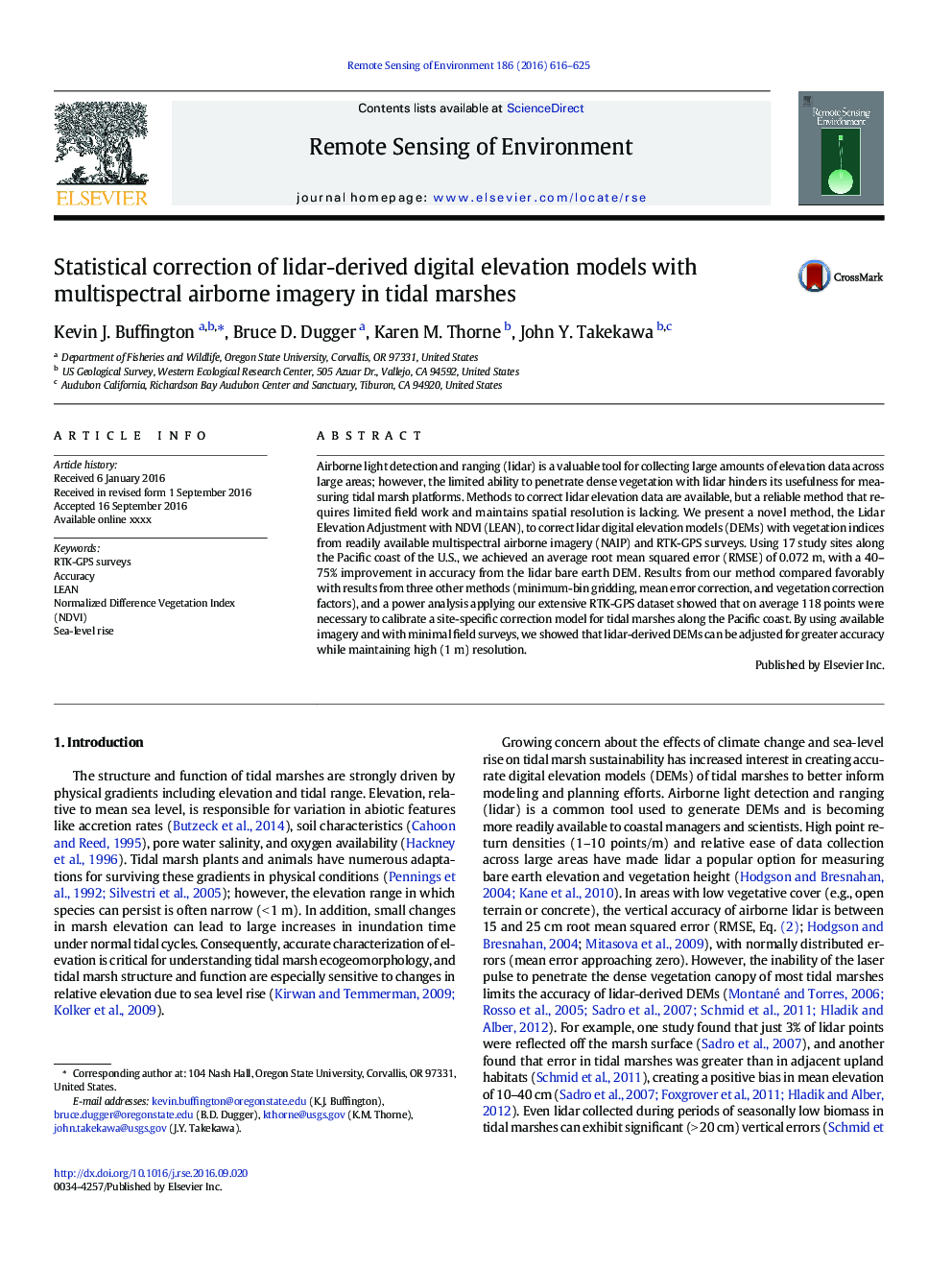| Article ID | Journal | Published Year | Pages | File Type |
|---|---|---|---|---|
| 6345125 | Remote Sensing of Environment | 2016 | 10 Pages |
Abstract
Airborne light detection and ranging (lidar) is a valuable tool for collecting large amounts of elevation data across large areas; however, the limited ability to penetrate dense vegetation with lidar hinders its usefulness for measuring tidal marsh platforms. Methods to correct lidar elevation data are available, but a reliable method that requires limited field work and maintains spatial resolution is lacking. We present a novel method, the Lidar Elevation Adjustment with NDVI (LEAN), to correct lidar digital elevation models (DEMs) with vegetation indices from readily available multispectral airborne imagery (NAIP) and RTK-GPS surveys. Using 17 study sites along the Pacific coast of the U.S., we achieved an average root mean squared error (RMSE) of 0.072Â m, with a 40-75% improvement in accuracy from the lidar bare earth DEM. Results from our method compared favorably with results from three other methods (minimum-bin gridding, mean error correction, and vegetation correction factors), and a power analysis applying our extensive RTK-GPS dataset showed that on average 118 points were necessary to calibrate a site-specific correction model for tidal marshes along the Pacific coast. By using available imagery and with minimal field surveys, we showed that lidar-derived DEMs can be adjusted for greater accuracy while maintaining high (1Â m) resolution.
Related Topics
Physical Sciences and Engineering
Earth and Planetary Sciences
Computers in Earth Sciences
Authors
Kevin J. Buffington, Bruce D. Dugger, Karen M. Thorne, John Y. Takekawa,
